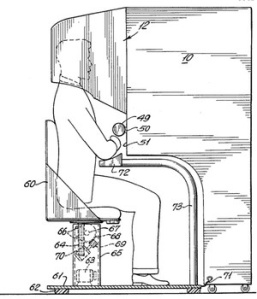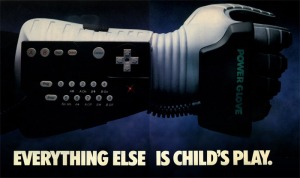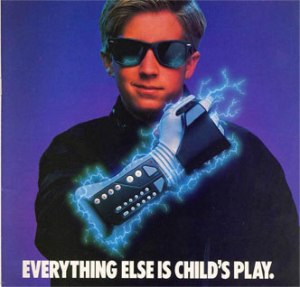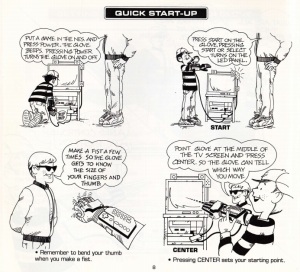Autodesk’s Formatless Future
A format, like a shared collection of social mores, allows a wide range of parties to act together with a common set of standards and expectations. These agreements, be they for voltage, size, hardware supports or interface design, are a vital component of a medium’s propagation through market systems. Often a format takes its shape from the media that precede it, from a corporate calculus of data efficiency or the idea of a prototypical receiving subject.[1] In the case of Virtual Reality, however, the need for a standardized format was at odds with its founding promise of unlimited plasticity and freedom. If VR was to be a virgin frontier for new forms of creativity and communication, then how could the inevitable restrictions and rigidity of standardization be justified?
These questions and conflicting drives are present under the surface of Autodesk’s public face. As one of the leading developers of early VR environments, Autodesk and its product AutoCAD were one of the first arenas in which the articulation of a format was raised. Gary Wells, an key programmer at Autodesk, set out the terms of the field thusly:
“[Cyberspace] is not a CAD system, it is not an extension of AutoCAD. It is never going to be an extension of AutoCAD. It is fundamentally a medium. It’s a whole new medium, a whole new way of interacting, a new way of communication knowledge and experience, particularly the kinds of experiences that are not described easily in words… Autodesk is very well positioned to supply tools to the people who are going to get excited about cyberspace as a medium.”[2]
Like Stewart Brand’s Whole Earth Catalogue, Autodesk sought to position itself as a cybernetic network, connecting autonomous communities to a non-hierarchical market commons.[3] While Autodesk provided an “OS or a kernel” with which to “drive cyberspaces”, the kinds of spaces and “dynamic bodies” to be driven were to be completely fashioned by the means and discretion of a diverse and multitudinous group of third-party developers.[4] If VR was to be a space of artistic freedom, then AutoCAD proposed to be a dramatically empty, formatless canvas on which other companies and individuals could paint.
Unlike painting, however, the field of VR development necessitated highly complex tools and a host of compatibility concerns that would defy the inter-medial ease of Picasso. Autodesk’s “cyberspace in a briefcase” system, initially designed to provide accessible VR capabilities to small companies and hobbists, cost just under $25,000. The system, really more of a steamer trunk than a briefcase, consisted of a software package, glove and head peripherals from VPL, and two i860 boards that had to be installed into an existing PC (not included).[5] Accessibility therein can only be understood in highly qualified terms.
Nevertheless, as Autodesk’s concept of cyberspace plasticity dispersed through the nascent VR industry (most of whom sought to compete rather than collaborate with Autodesk) the problem of mediating computer and VR technology intensified. In an effort to achieve ever-better graphics, high-end headsets began to implement separate A/V or VGA signals to each the LCD screens supplying images to the eyes. This dual graphic requirement meant that two separate graphics cards were required to power the headset displays- a demand that most PCs were not prepared to accommodate gracefully.[6] The stand-alone peripherals, sourced from a variety of suppliers, also added to consumer frustration. This was parodied in a promotional video for Forte’s VFXI headset system which compared the experience of setting up their product with a generic ‘Ciber Goggles’ headset.[7] Confounded by a deluge of plugs, the Ciber Goggles user was unable to find an access port left for his DataGlove, and so resigned himself heavily to the confines of his mouse. While certainly ham-fisted, the video nevertheless provides a telling glimpse into the fraught interface between the two sets of hardware.[8]
The tension between an individual’s freedom to design their own experience and the need to standardize a universal format was also felt on the level of the body. Meredith Bricken, a psychologist working closely with the Autodesk team, would begin her introduction to cyberspace by noting, “it takes this perceptual apparatus [gesturing to her body] and gives it an entirely new frame of reference and an entirely new set of rules…. The idea of perceptual movement is completely flexible. You can see anything from anywhere.”[9] Immediately after, however, Bricken notes that this space of perceptual freedom was actually radically disorienting to users. Without the habitual spatial cues of physical reality such as horizon lines and object permanence, VR could pose a radially alienating environment to its users, at times making them vomitously ill.[10] Consequently, for the Autodesk team,
Movement is something we have to consider in terms of joining what we perceive with this great freedom of cyberspace. And that means constraining things. We’ve already taken our six degrees of freedom joystick and cut out a few of those degrees of freedom so that we have some control at all.[11]
Just as a format takes its shape from the restrictions and alterations it makes to its medium to deliver a standardized experience, so too can the human body’s perceptual apparatus be understood as a kind of format- one with which the Autodesk cynerneticians had to carefully ensure compatibility.
The standardization of perceptual experience and hardware compatibility continued to dog the industry as it approached its adolescence in the late-1990s. In the wilful absence of a clearly defined format or robust industry partnerships, many young start up companies were drawn and quartered between the paradoxical demands of the market and VR’s early hype.[12] Finding a way to mould VR into the shape of the human sensorium, while still delivering radically new perceptual experiences, proved to be an impasse at which the industry still struggles to cross. Mass consumer VR, if and when it emerges, will no doubt bend to market pressures for an accessible and efficient standard. It remains to be seen, however, if the radical promises of the medium can survive a transition to this format.
[1]Jonathan Sterne, MP3: The Meaning of a Format (Durham and London: Duke University Press, 2012), 14-19.
[2]Gary Wells, speaking on an Autodesk panel at an unidentified industry conference, recorded on the latter part of a VHS tape of Cyberspace: The New Explorers (1989). Autodesk, “Cyberspace: The New Explorers (1989)”, Internet Archive: Timothy O’Leary Archive, http://archive.org/details/Timothy_Leary_Archives_005.dv, accessed 7 April 2013.
[3]For more on Brand, the Whole Earth Network, and its relationship with liberal capitalism, see Fred Turner, From Counterculture to Cyberculture: Stewart Brand, the Whole Earth Nework, and the Rise of Digital Utopianism (Chicago and London: University of Chicago Press, 2006), 99.
[4]Ibid.
[5]Howard Rheingold, Virtual Reality (New York: Summit Books, 1991), 186-187.
[6]“10 Reasons Why Virtual Reality Did Not Become a Standard,” V-Rtifacts, 18 April 2010, http://www.vrtifacts.com/hmds/10-reasons-why-virtual-reality-did-not-become-a-standard/, accessed 7 April 2013.
[7]Forte Technologies, “VHX1 Promotional Video,” 1995, availiable from http://www.youtube.com/watch?feature=player_embedded&v=3yGiiU8_gnE, accessed 7 April 2013.
[8]The video goes on to promote Forte’s strict adherence to industry standards and a network of business alliances that ensured the comparability of its product with a wide range of contemporary and future games and graphics cards. It ends by noting, “Until nowVR has not lived up to its promise. In this fastest of fast changing environments, that regret now belongs to yesterday,” further hinting at the dissatisfaction of early adopters.
[9]Meredith Bricken, speaking on an Autodesk panel at an unidentified industry conference, recorded on the latter part of a VHS tape of Cyberspace: The New Explorers (1989). It should also be noted that Meredith Bricken was the wife of William Bricken, the project leader of Autodesk’s cyberspace initiative.
[10]“10 Reasons,” V-Rtifacts.
[11]Ibid.
[12]Ibid.



